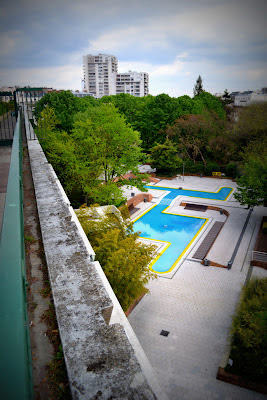As a regular new feature, I will therefore publish one item from a newspaper picked at random from the archives and look into the story behind the clipping. First up, the mysterious attempted suicide of a doctor in a Paris cinema.
(Le Petit Parisien, Friday February 18th, 1927)
Quickly summarised, this news brief reports on the attempted suicide of a doctor at the end of a film in a cinema on the Boulevard des Italiens. Apparently lovesick, the doctor, Mr Léon Leslie, shot himself in the heart and was quickly rushed to the Charité hospital.
Dramatic but apparently banal, this story really becomes interesting in the reports published in the days that followed the incident.
(Le Petit Parisien, Saturday February 19th, 1927)
Before shooting himself, Mr Leslie apparently wrote a thirteen-page long letter describing in detail his chagrin. The young doctor (28 years old) is in fact a dentist, and unhappily married to a rather fast-living woman of Italian origin, whom he had met in Nice in 1919. According to the article, Mr Leslie was soon 'ruined' by his new wife, and was obliged to move to Saigon to start up a new practice. Once again though, he began to suspect his wife of having an affair, and even fought a duel with one rival, an incident that brought him a one-year prison sentence.
Mr Leslie then decided to return to France, but by that time his wife had met an actor, and moved with him to Germany. Leslie travelled to Germany to try and win her back, but after she refused in no uncertain terms he decided to kill himself. His chosen method? In front of one of the films starring his rival!
Reading Le Petit Parisien, it soon becomes clear that the articles are not always completely reliable. To be more precise, they are often full of errors and imprecisions! Was this the full story? It seemed so until the tale was picked up two months later in the American press, notably here in the Milwaukee Sentinel (which I encourage you to read as it recounts the story in great detail).
Here we learn that Mr Leslie was in fact an American (hence the interest in the press in the states). He originally ran the US army dental clinic in Tours, an institution that the paper amusingly says will be remembered by thousands of veterans "with happy, unhappy or mixed emotions". On vacation in Nice he met an attractive young French girl named Renée Ricci, and the two lovers were soon married. Leslie decided to stay on in France and set up practice in Nice and Biarritz.
(The Milwaukee Sentinel, April 17th, 1927)
Whether Ricci was overly flirtatious or whether Leslie was jealous and possessive is not clear, but the marriage was soon an unhappy one. Each time Leslie became suspicious of his wife, he quickly sold up the practice and moved elsewhere - until the duel in Saigon.
The article names Leslie's love rival as Warwick Ward, a largely forgotten name in the history of cinema, but described as "a rising star" in the paper. As Leslie returned to Paris after unsuccessfully attempting to win back his wife, it is said that the first thing he saw when stepping off the train was an image of Ward's latest film. He decided then and there that he would kill himself in front of the film.
He didn't do this at the first opportunity though, but instead watched the film for eight nights in a row! It was at the end of the final showing of the film that Leslie pulled out his gun and shot himself (in the head, not the heart according to the Sentinel).
Somewhat incredibly, Leslie did not die straight away. Indeed, the Milwaukee Sentinel article, written two months after the event, still describes him as hovering "between life and death".
I have little information about what happened afterwards. According to the IMDB, Warwick Ward lived until 1967, becoming a producer after his acting career seemingly came to an end in 1933. The lives - and deaths - of Ricci and Leslie though remain a mystery.
What is left in Paris of this tale? The Charité hospital, where Leslie was taken after the incident, had been situated on the Boulevard Saint Germain but was closed and demolished in 1935. According to the Sentinel, the incident took place in a cinema called the Imperial on the Boulevard des Italiens. Although there are still several cinemas in this area, this particular one was apparently demolished in 2001. Today the spot is occupied by a Lebanese restaurant, removing perhaps the last remaining trace of the story - outside of the archives!









































